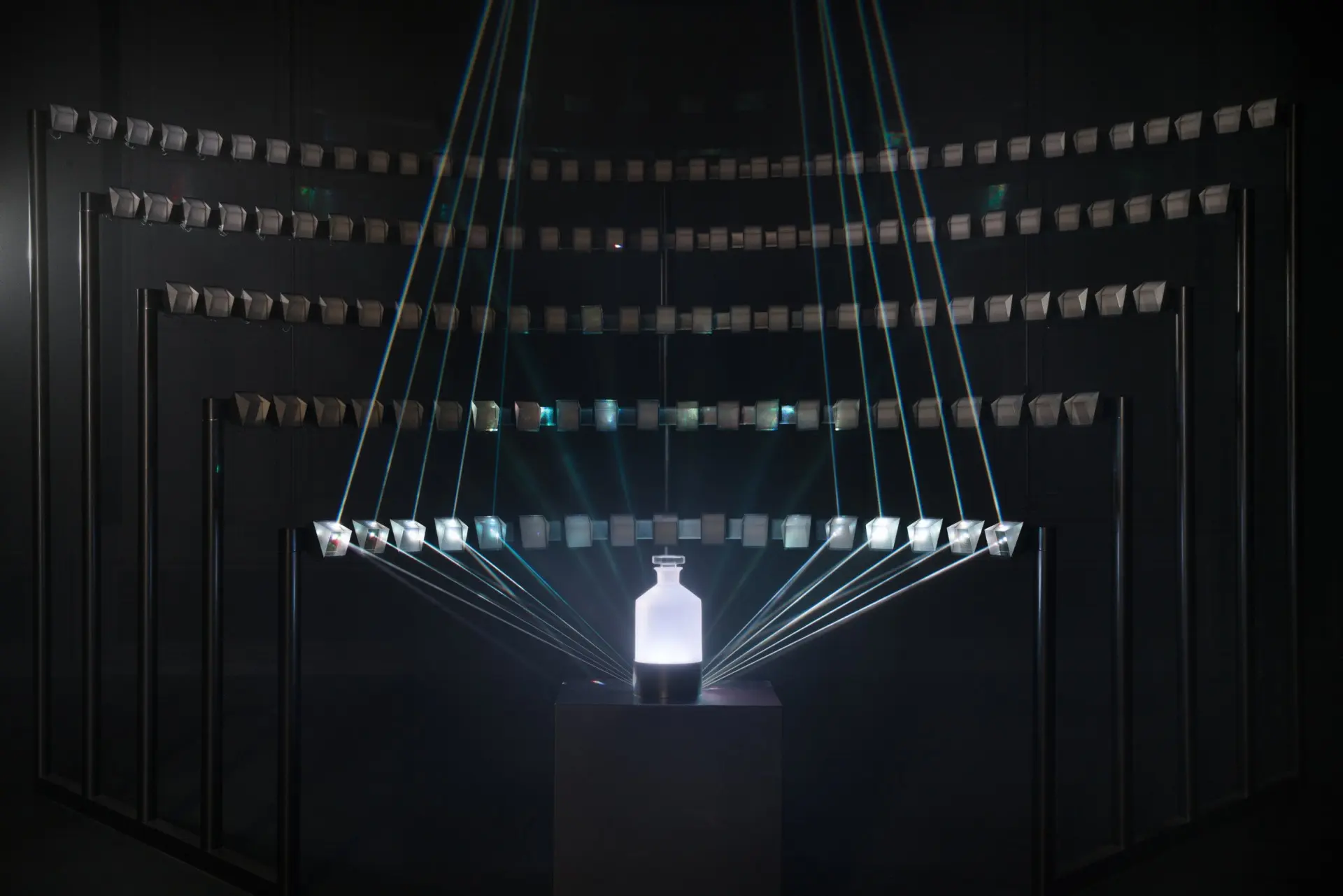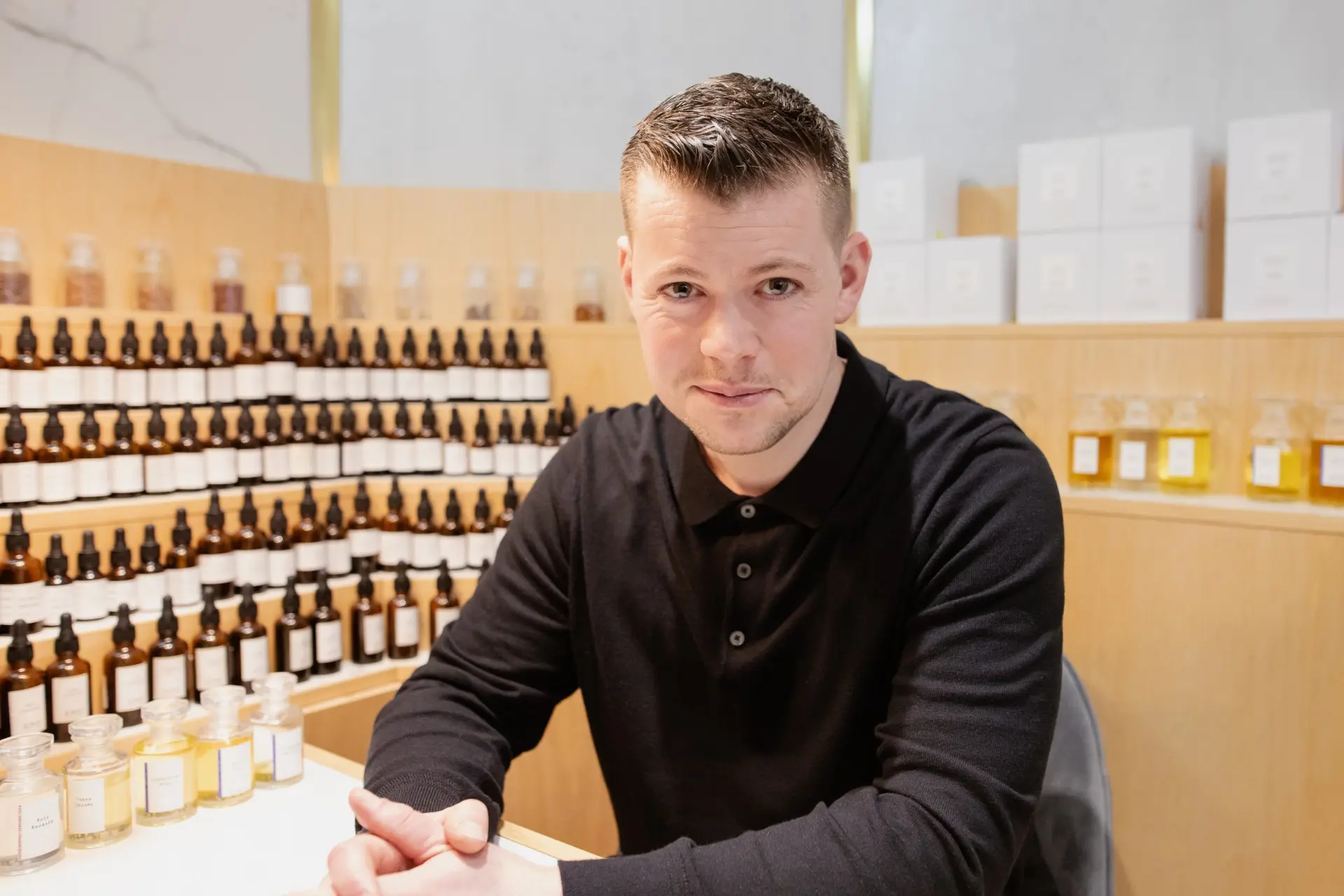For decades, branding has prioritised the visual. But in a world oversaturated with imagery, the most powerful connections are being forged through the interplay of sound and scent, two of the most instinctive, emotional, and memory-triggering senses.
No longer entirely separate disciplines, sonic branding and scent branding are colliding, offering brands an unprecedented way to immerse audiences in deeply resonant, multi-sensory experiences.

Find out more about Scent by DLMDD by visiting thescentagency.com
Sound and scent share a language - top, mid, and base/bass notes, harmonies, and accords. A perfumer, much like a composer or producer, layers notes to craft an evocative final piece, orchestrating an arrangement from a vast palette of possibilities. In Western music, there are twelve notes, yet infinite ways to structure them into compositions; in perfumery, the range is even broader, offering boundless creative potential. This connection isn’t new - 19th Century chemist and perfumer G.W. Septimus Piesse pioneered the idea of an ‘olfactory scale’, aligning scents with musical tones, from high, bright tones like verbena and peppermint to the deep, resonant tones of vanilla and patchouli.
The Science of Collision
The link between scent and sound isn’t just conceptual, it’s neurological. The two senses share a direct route to the limbic system, the brain’s control centre for emotion and memory. Research shows that certain sounds can alter the way we perceive scents, making them feel warmer, fresher, or even more expensive. In reverse, scent can reshape how we perceive music, adding emotional depth and even influencing tempo perception.
Cross-modal references refer to the intuitive associations people make between different senses, such as linking specific sounds with certain scents. For instance, high-pitched sounds are often associated with citrus fragrances, while deeper, low-frequency tones might correspond with musk or woody scents. By carefully curating the interplay between these senses, brands can craft more immersive and memorable experiences.
This interplay is at the heart of synaesthesia, a neurological phenomenon in which the stimulation of one sense involuntarily triggers another. While only a small percentage of people naturally experience cross-modal perception, brands are now engineering synaesthetic experiences - deliberately pairing sound and scent to enhance emotional impact and deepen consumer engagement.
“ Now we are entering a new era where scent is reclaiming its place in shared experiences. This return to multi-sensory storytelling builds on a long lineage of artistic experimentation, where different senses have been brought together to create new forms of expression. ”

1. Spicebomb Infrared
Luxury fashion house Viktor&Rolf has taken fragrance innovation to a new level with Spicebomb Infrared, a perfume designed to be experienced to a new level not only through scent, but also through sound. In collaboration with Ircam Amplify, a research centre specialising in psychoacoustics, Viktor&Rolf created a unique auditory identity for the fragrance, enhancing its sensory impact.
The perfume itself is an explosion of heat and spice, featuring notes of chilli pepper, cinnamon, black pepper, and red berries. To translate these elements into sound, Ircam’s sound designers used the SpeaK method, a technique based on psychoacoustic research that maps olfactory sensations to corresponding frequencies.
The result is a soundscape designed to amplify the fragrance’s intensity, evoking the sensation of warmth and spice through auditory simulation. By linking scent with sound, Spicebomb Infrared extends the fragrance experience beyond the nose, reinforcing the emotional and physical reactions triggered by its composition.
The fusion of perfumery and acoustic research signals a new frontier in fragrance marketing, where brands move beyond visual advertising to engage consumers on a deeper, multi-sensorial level.
2. Kind of Blue: Pantone’s Multi-Sensory Tribute to Colour
When Pantone announced Classic Blue as its Colour of the Year in 2020, the company went beyond visual representation, crafting a full multi-sensory identity for the shade. In collaboration with creatives across various fields, Pantone developed a suite of experiences designed to evoke Classic Blue through scent, sound, taste, and touch.
The campaign included:
A suede-like fabric swatch, offering tactile representation of the colour;
A musk-and-sea-salt scented candle, embodying the depth and serenity of Classic Blue;
A berry-coloured jelly, capturing the richness of the hue in taste form;And a three-minute audio track titled “Vivid Nostalgia”, designed to sonically express the emotion and mood of Classic Blue.
By engaging multiple senses, Pantone’s “Classic Blue” campaign pushed the boundaries of colour branding, demonstrating how visual identity can be expanded into an immersive, multi-sensory experience.
3. The EQS: The Luxury of Sound and Scent in Motion
Mercedes-Benz has redefined luxury driving with the EQS, their flagship electric vehicle, by integrating sound, sight, and scent into a seamless immersive experience. While traditional automotive design prioritises visual aesthetics and physical comfort, the EQS goes further, engaging multiple senses to enhance well-being and emotional connection.
At the heart of this innovation is the Energising Comfort programme, featuring natural soundscapes like Forest Glade, Sounds of the Sea, and Summer Rain, designed to promote relaxation with calming sounds of nature. The EQS also includes a subtle fragrance system with woody, earthy notes that complement the soundscapes, enhancing the tranquil atmosphere.
By merging audio engineering, perfumery, and cutting-edge automotive technology, Mercedes-Benz has created a driving experience that is not just about movement, but about feeling: an evolution of the traditional luxury car into a true multi-sensory sanctuary.
4. Volcanic Collision: Jónsi’s Eruption of the Senses
Jónsi Birgisson, the frontman of Sigur Rós, is known for his ethereal vocals and expansive soundscapes. With Hrafntinna (Obsidian), he takes his artistry to an unprecedented level, immersing audiences in an eruption of sound, light, and scent.
Performed in near-complete darkness, the experience places attendees on a circular platform surrounded by a 360-degree soundscape. The composition, a 25-minute sonic journey, weaves together field recordings of volcanic eruptions with Jónsi’s signature falsetto, choral arrangements, and the intimate ASMR-like sounds of his breath and mouth movements. The glitches and pops in the audio mirror the unpredictability of nature, making the audience feel as though they are in the heart of a volcanic explosion.
Beyond the auditory experience, Jónsi incorporates scent as a fundamental element. The air fills with a smoky, salty fragrance crafted using fossilised amber (the only essential oil mined from the earth), adding an olfactory layer to the volcanic simulation. Above the audience, a pulsing circle of light mimics the mouth of a volcano, reinforcing the immersive effect. Subwoofers embedded within the platform vibrate with the deep rumble of an eruption, ensuring that the audience not only hears but physically feels the experience.
By engaging multiple senses simultaneously, Hrafntinna transcends traditional musical performance, transporting participants into a visceral, elemental encounter with nature itself.
A Forgotten History of Sensory Collisions
Historically, scent was an integral part of public experiences. In many ancient cultures, professional incense burners performed their craft in front of large audiences, whether for religious rituals, cultural celebrations, or healing ceremonies. However, in the Western world, the 20th century saw the role of scent become more limited, mainly used in church rituals or to mask unpleasant odours. Meanwhile, mainstream entertainment focused solely on sight or sound.
Now we are entering a new era where scent is reclaiming its place in shared experiences. This return to multi-sensory storytelling builds on a long lineage of artistic experimentation, where different senses have been brought together to create new forms of expression.
One of the most striking historical examples is Alexander Scriabin’s Prometheus: Poem of Fire (1910), a composition deeply rooted in synaesthetic vision. Scriabin, believed to have experienced music in colour, envisioned a performance that integrated not only sound and projected hues, but scent. Though he never fully realised this concept in his lifetime, recent performances have revived his ambition to create a gesamkunstwerk, or a “total work of art”. In March 2024, the San Francisco Symphony staged Prometheus as a multi-sensory experience, incorporating scented smoke rings and diffusers designed by Cartier perfumer Mathilde Laurent. The event marked a radical return to Scriabin’s original idea, showing how technological advancements can finally bring historical ambitions to life.
These contemporary experiments demonstrate that sensory collisions offer audiences new depths of immersion. The blending of sensory elements, once seen as avant-garde, may soon become the norm in places like concert halls, museums, digital spaces, and more. As science and technology continue to unlock new ways of engaging perception, we may see the rise of performances and environments that are not just heard and seen, but fully felt, an evolution that Scriabin himself might have imagined over a century ago.



